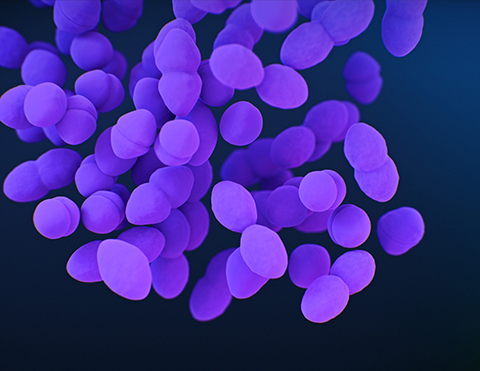Are microbes the key to preventing postsurgical gallstones?
A nearly 70-year-old procedure, bariatric surgery, or BS, continues to gain momentum as a popular approach to combat morbid obesity. The procedure results in dramatic weight loss over a short period of time. However, studies have reported that about 40% of BS patients develop gallstones after surgery, and these rocklike deposits of bile fluid can cause severe pain when they block a bile duct.
So why do some patients develop gallstones, while others do not?

Maimoena S.S. Guman, a researcher at Amsterdam University Medical Centers who already had found that gallstones form differently in BS patients than in the general population, reported recently in the Journal of Lipid Research on efforts to answer this question.
“The unique part of this research is that this is the first attempt to investigate protective mechanisms instead of causality for gallstone development,” Guman stated in an email.
To identify baseline differences between BS patients who did and did not develop gallstones, Guman’s team studied 88 patients, analyzing three metrics prior to surgery: the fasting metabolome, the liver and adipose transcriptome, and the gut microbiome. They monitored gallstone development after surgery and analyzed differences in each population for possible protecting factors. In line with previous reports, they found that 32 of the 88 patients, or 36.4%, developed gallstones or sludge (which precedes gallstones) or reported gallstone symptoms within two years of the procedure.
The metabolic analysis showed higher concentrations of plasma metabolites, including a number of conjugated bile acids, in the patients with gallstones. In the same patient group, transcriptomic analysis showed the upregulated expression of 15 genes related to processes including cell division, cholesterol/fatty acid metabolism and tissue inflammation.
In analyzing the gut microbiome, Guman’s team found differentially expressed strains between the patient groups. Four of these strains were enriched in patients with gallstones, includingRuminococcus gnavus, a biomarker for gallstones. Patients who did not develop gallstones, however, had an enrichment in 37 different strains of bacteria, 7 belonging to the Enterobacteriaceae family and 12 to the Lactobacillae family, including a strain used in the making of yogurt: Lactobacillus casei.
When asked if a simple probiotic source, like yogurt, could help protect against gallstone development, Guman wrote, “Based on our results it would be too early to conclude that a simple intervention as having yoghurt enriched with Lactobacillaceae would help, although this finding has been described previously. An intervention study with one group having Lactobacillaceae, either in yoghurt or maybe as supplement pills, would be needed to prove this relationship.”
This study was driven by the desire to gain knowledge that could help protect BS patients from gallstone development. Guman’s team has identified factors that may lead to that goal while opening doors for new avenues of research.
“Prevention is better than cure,” Guman wrote, “but first, we need more research, and I hope this work has inspired others to keep digging further.”
Enjoy reading ASBMB Today?
Become a member to receive the print edition four times a year and the digital edition monthly.
Learn moreGet the latest from ASBMB Today
Enter your email address, and we’ll send you a weekly email with recent articles, interviews and more.
Latest in Science
Science highlights or most popular articles

The science of staying strong
Muscles power every movement, but they also tell the story of aging itself. Scientists are uncovering how strength fades, why some species resist it and what lifestyle and molecular clues could help preserve muscle health for life.

Bacteriophage protein could make queso fresco safer
Researchers characterized the structure and function of PlyP100, a bacteriophage protein that shows promise as a food-safe antimicrobial for preventing Listeria monocytogenes growth in fresh cheeses.

Building the blueprint to block HIV
Wesley Sundquist will present his work on the HIV capsid and revolutionary drug, Lenacapavir, at the ASBMB Annual Meeting, March 7–10, in Maryland.

Gut microbes hijack cancer pathway in high-fat diets
Researchers at the Feinstein Institutes for Medical Research found that a high-fat diet increases ammonia-producing bacteria in the gut microbiome of mice, which in turn disrupts TGF-β signaling and promotes colorectal cancer.

Mapping fentanyl’s cellular footprint
Using a new imaging method, researchers at State University of New York at Buffalo traced fentanyl’s effects inside brain immune cells, revealing how the drug alters lipid droplets, pointing to new paths for addiction diagnostics.

Designing life’s building blocks with AI
Tanja Kortemme, a professor at the University of California, San Francisco, will discuss her research using computational biology to engineer proteins at the 2026 ASBMB Annual Meeting.

